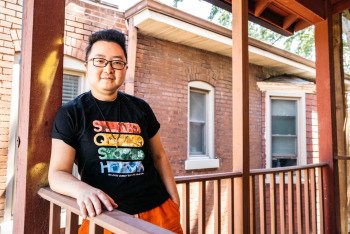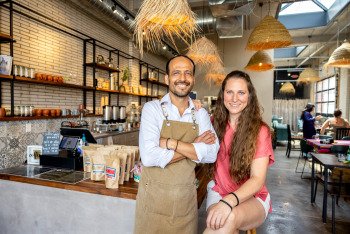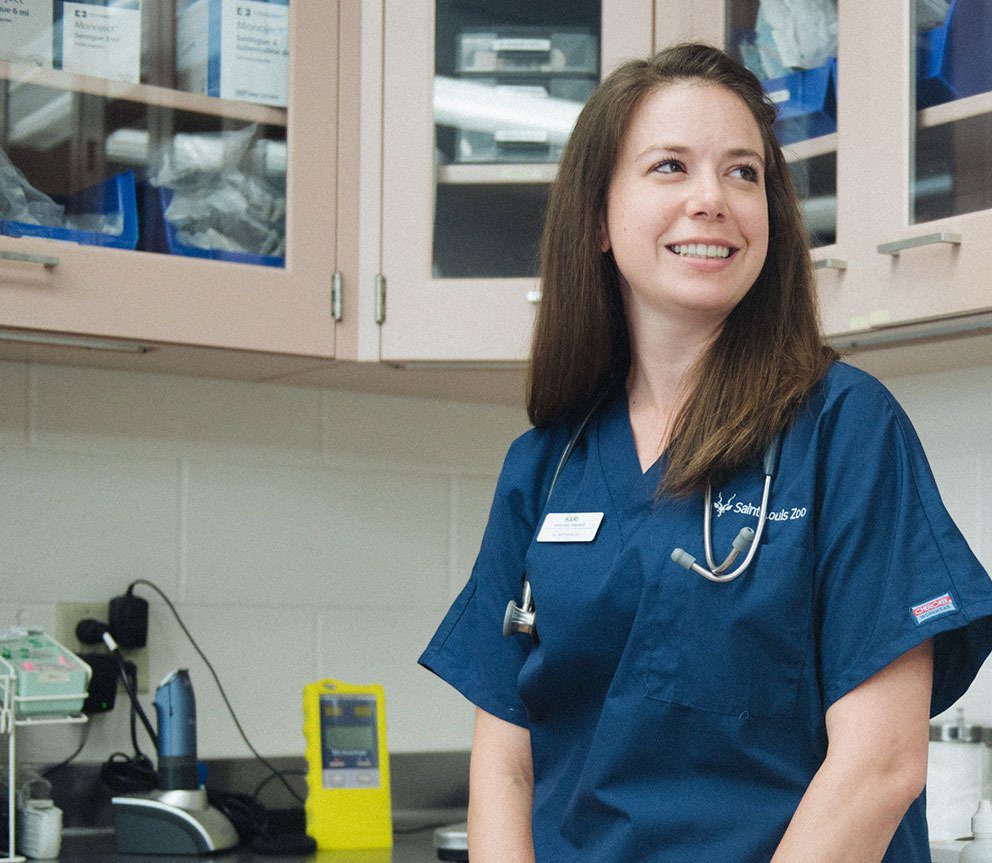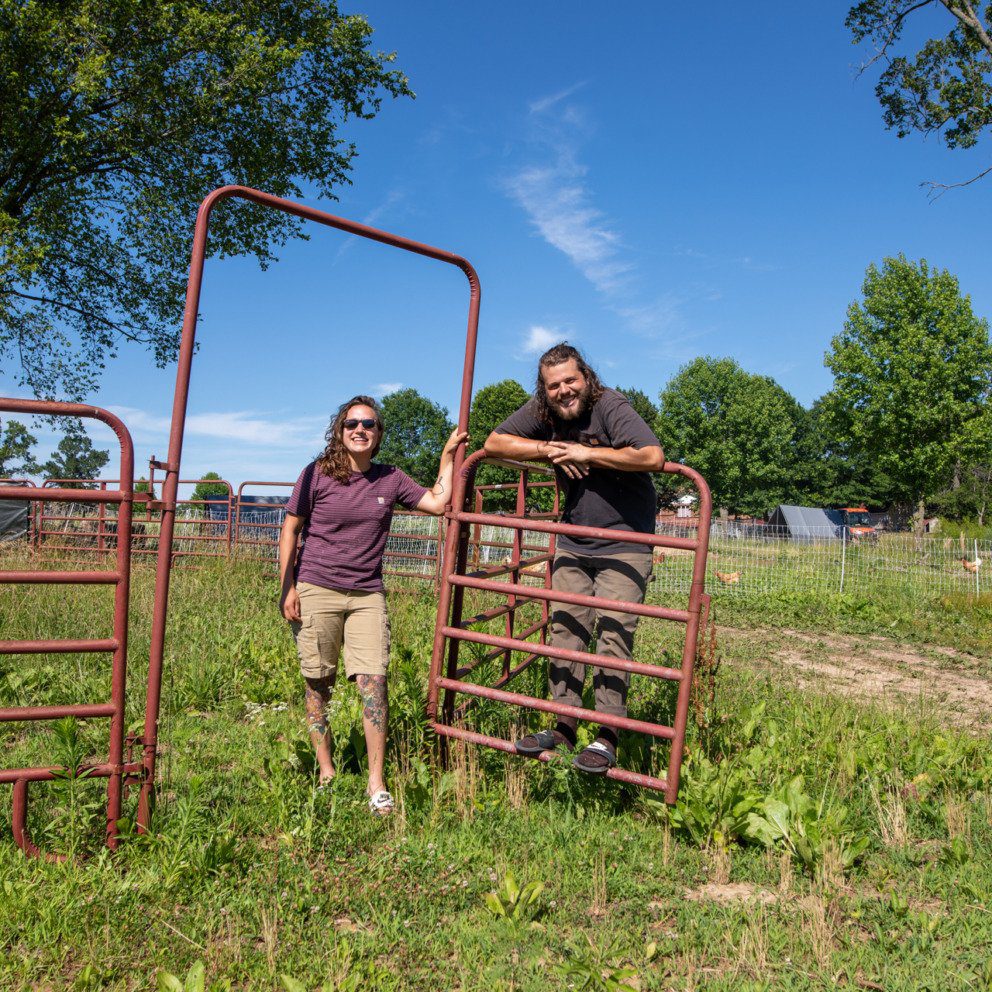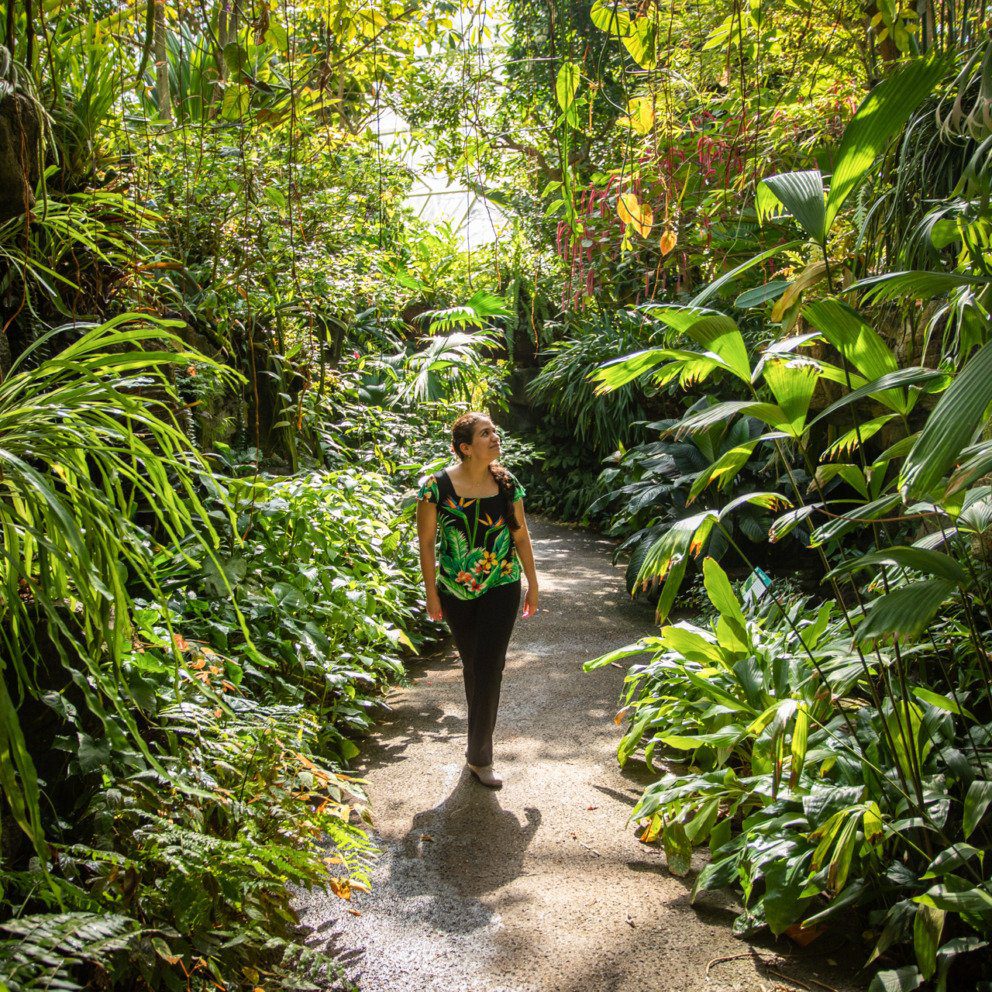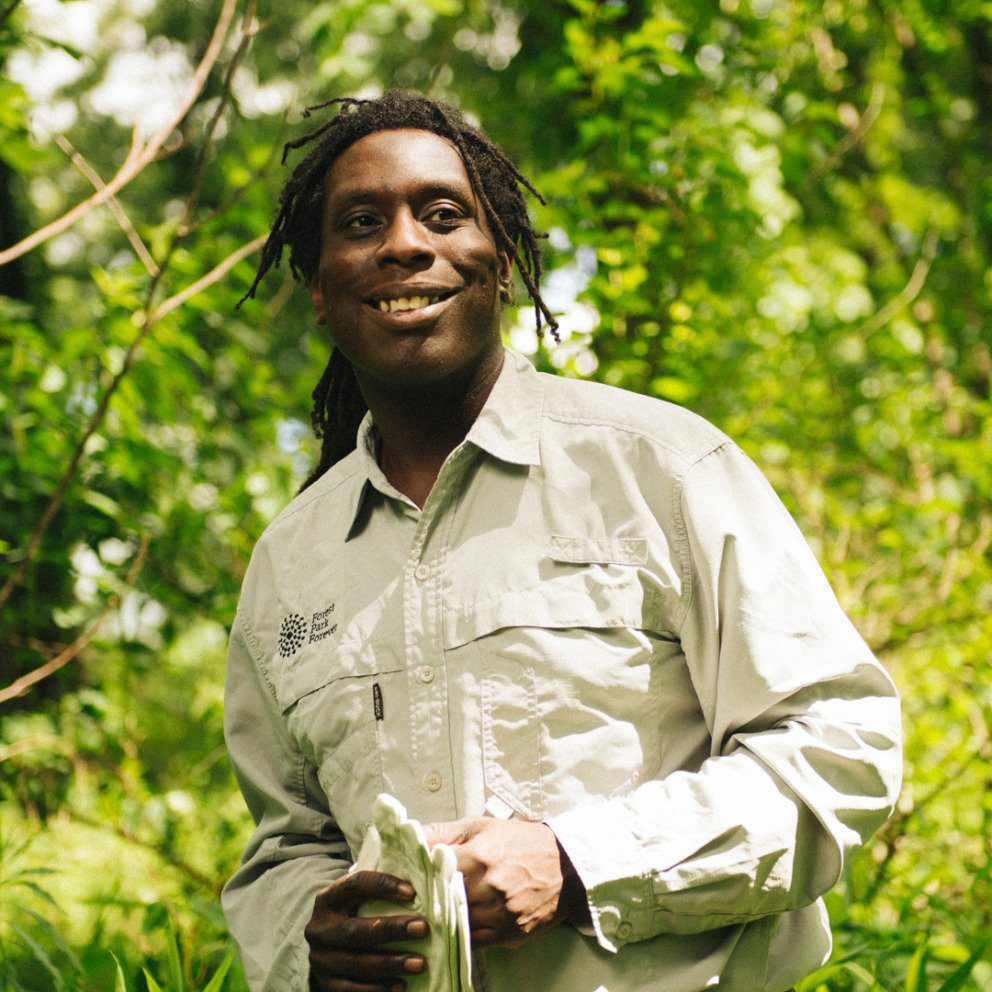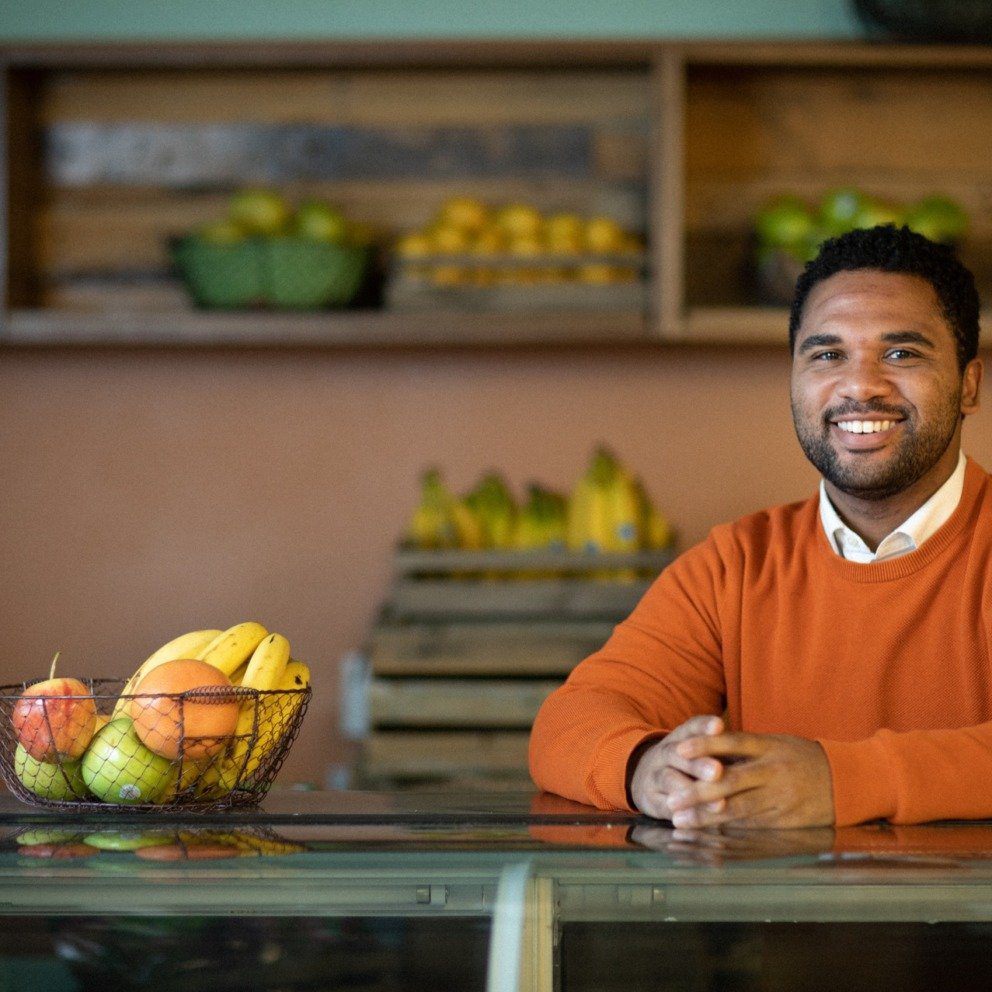Hive Mind – Part One
With the goal of helping community gardens produce more fresh food, scientists from six different St. Louis institutions are collaborating to research pollination in urban orchards.
This story is the first of a two-part series.
Gerardo Camilo, Ph.D., remembers the precise a-ha moment fifteen years ago that led him on the path that would become his work in the field of urban pollination. A trained theoretical ecologist with expertise in applying mathematical theory to ecological patterns and processes, Camilo was speaking with a colleague who challenged him about the theater of his work. If his ecological theory was as good as he said it was, she pushed, it should work as well in the rain forest as in the city.
“I said, ‘Oh my god, that’s true,’” Camilo recalls. “Science is science is science. It shouldn’t matter where you are. At the time, I had never thought of ecology in the city. Ecology is something you do in a rain forest if you go to Australia to the great coral reef, or you go somewhere else exotic where hopefully you learn something about nature and say, ‘Oh, hold on a second; we are part of nature.’ Science should be able to explain what’s happening in the city, because the city stuff that we made and integrated into the environment and into the city is the quintessential human ecosystem.”
At the time when Camilo shifted the aim of his research to focus on St. Louis, it was estimated that there were 45 species of bees in the city. Thanks in large part to the work of Camilo and his students at Saint Louis University, it’s now known that the city is home to more 200 species of bees – 45 percent of all bee species found in the entire state of Missouri. Now, Camilo is applying his wealth of pollinator knowledge in a new way through a collaborative research project bringing together scientists from six area institutions – each with their own expertise as it relates to bees or plant pollination – to explore ways to improve food yield from urban orchards. Working alongside community gardeners and nonprofit organizations like Seed St. Louis, these researchers are looking at pollination from every possible angle with the goals of maximizing fruit production while supporting biodiversity and not only having an environmental impact, but a social one as well.
Like Camilo, Aimee Dunlap, Ph.D. understands the urge to think of ecology as something that happens far away. In addition to her work as an associate professor of behavioral ecology at the University of Missouri–St. Louis, Dunlap is a master gardener and volunteers with her local community garden in Old North. She leads the urban pollination project team with an infectious enthusiasm about all that is happening right here in St. Louis.
“I think that sometimes, when we think of animal behavior and we think about nature, we think about nature that’s far off,” Dunlap says. “It’s in Glacier National Park. It’s whales in the ocean. But right in your backyard is so much drama of what’s going on, just among the insects. A lot of times when we’re in our yards or we’re at a picnic, we see bees around. Those bees have fascinating lives. And we have so many different kinds of bees that all have different natural histories, like how they handle the winter, how they find mates, how they’re finding food, how they’re nesting. There’s such diversity here – when you dig into that, it is absolutely fabulous.”
As Dunlap explains, she, Camilo and their fellow researchers came to work together on their urban pollination project organically. For a while, each member of the team – Dunlap, Camilo, Nathan Muchhala of the University of Missouri–St. Louis, Ed Spevak of the Saint Louis Zoo WildCare Institute Center for Native Pollinator Conservation, Nicole Miller-Struttmann of Webster University, Kyra Krakos of Maryville University and Peter Hoch, curator emeritus at the Missouri Botanical Garden – had been working on their own research projects into a particular aspect of pollination. They respected each other as colleagues and would regularly get together for casual happy hour discussions about their work. This led them to start wondering if there was a way that they might combine their expertise into one large research project. Pollination in urban orchards seemed like the perfect fit, thanks to the St. Louis area’s large diversity of bees, interesting urban landscape and plethora of natural areas which make it an ideal place to do urban, suburban and exurban field work with the pollinators.
Once the team decided on pollination in urban orchards as their research topic, they reached out to Dean Gunderson, director of education at the community garden-focused nonprofit Seed St. Louis. Because of Gunderson’s work in establishing and helping maintain 250-plus community gardens, he was able to help the pollination researchers identify sites where they could focus their efforts and serve as the link between the team and community groups. Armed with this information and these connections, the researchers began to dig into how the decisions that humans make are influencing the bees in urban orchards, how this effects fruit yields, and, ultimately, what this means for a community’s ability to nourish itself.
“It’s really exciting to be able to take all these different sites, to be able to pull data together, and then hopefully to be able to take that data to then improve and reinforce the education that we’re doing out to the full network of 250 groups to help them improve,” says Gunderson.
Miller-Struttman, an assistant professor of biology whose research focuses on plant-pollinator interactions, founded citizen community science project Shutterbee to both help conserve pollinators and promote public understanding of science, and brings that same mindset to this collaborative research project.
“We were talking about pollination and how it’s important, but also how we, as scientists, are not separate from our communities; not just bee communities, but human communities, right?” says Miller-Struttman. “So we all had this interest in bees and urban environments and people’s relationships with those bees and with the plants that support them.”
She also notes just how important it is to explore the connection between human behavior and environmental impact in urban settings – something she believes has been previously underrepresented in conservation research.
“One of the things that the conservation field is really pushing toward and seeing as important is human-dominated landscapes as being important parts of the ecosystem,” Miller-Struttman explains. “We’ve recognized that they are part of them, but so much of conservation historically has really focused in on large swaths of natural land, meaning places where people aren’t dominating the system. But we are dominating the system. We are dominating many parts of the world and the globe. With that means that we have to understand the ecology within those systems in order to conserve it. So, in this kind of project, we’re really collaborating with people who are making decisions in yards every day, or in gardens every day – making those decisions and really trying to process what is the best way to do all of the things that we need this land to do, which is to provide food, to provide green spaces for human health, but then also to support biodiversity.”
Camilo emphasizes that the shift from thinking of ecology and conservation as relating only to wide open spaces, deep seas and forests to considering densely populated areas as well is increasingly urgent and important given population growth in urban areas.
“There’s a lot that we need to learn because the global population is about to hit 8 billion people in a couple more months,” explains Camilo. “Fifty-five percent of the people in the world already live in a city. In the United States, it’s 83 percent. And by 2050, the global population will increase from 8 billion to 10 billion, and two out of every three people of that 10 billion will be living in a city. That means that the entire urban infrastructure in the entire world has to double in 28 years.
“We have to rethink our priorities rather quickly.”
St. Louis has proven itself to be an ideal place for such exploration, not simply because of its ecology but also because of its research ecosystem. Camilo, Dunlap and Miller-Struttman all point to the area’s reputation as a center of pollination research, drawing ecologists and biologists from around the world who are eager to collaborate with such esteemed institutions as the St. Louis Zoo and Missouri Botanical Garden. This, together with St. Louis’ role as a hub for plant science research and innovation, makes collaborations like the urban pollination project feasible, and position the region to make real progress toward understanding such an important facet of the urban ecosystem.
The U.S. Department of Agriculture sees the potential in this field of research. In November 2021, the organization’s National Institute of Food and Agriculture recognized the important work that the scientists are collaborating on, and awarded the project a $633,000 grant to help fund it. The grant was noteworthy not only for providing funding, though.
“We wrote this proposal, which in all my years of research and submitting grants, anytime I have written a proposal for a large amount of money, it always comes back with some kind of criticism,” says Camilo. “This proposal came back not just awarded, but with real praise.
“We’re all tremendously excited about the chance to address these kind of questions in the way we’re addressing it. And this can essentially set an example on how to integrate people from various institutions.”
“We have an incredible team that happened to occur in this environment, in this city almost by accident, but not really. Pollinator biologists flock to the city, and then pollinator ecologists do too,” says Camilo. “Throughout the years, the number of experts and people interested in pollination and pollinators has kept building.
“St. Louis is a great, great place to come and study pollinators and pollination.”
Read the second part of this series here.
Join the Story
- Listen to Nicole Miller-Struttman’s interview with St. Louis Public Radio about Shutterbee.
- Read more about Gerardo Camilo’s work in Saint Louis University’s alumni magazine “Universitas.”
- Check out the classes and events offered by Seed St. Louis.

